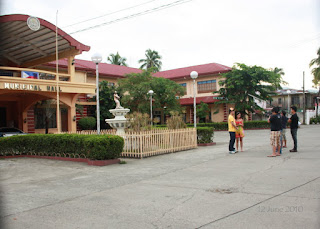This is Umingan where the rolling hills and verdant plains over peace-loving Filipino with tranquil mind and reverential abode. Located smugly of the foot of Caraballo Mountains it lays at the East-South Eastern most part of Pangasinan. It borders the town of Lupao on the east and the town of Cuyapo on the south. Both bordering towns are in the province of Nueva Ecija. Umingan is also bordered in the north by the town of San Quintin and by the town of Balungao on the west.
Umingan is some two hundred kilometers from Manila and eighty and six kilometers from the Provincial Capital of Lingayen. Its population of 54,398 as shown the by 2000 Integrated Census is regularly settled and spread in its vast area of 27,083.70 hectares. With farming as the mayor industry of 90% of the people, the municipality does not experience much prolonged period of scarcity and want in in-between regular harvest season. The soil composition is clayed to sandy loam which is favorable to rice, corn, tobacco, sugar cane, peanuts, camote and cassava.
Ninety-seven (97) percent of the town populations are descendents of the sturdy Ilocano stock thereby explaining this is an Ilocano town speaking the Ilocano dialect. Three (3) percent of the people are either descendant family from the central and coastal town of Pangasinan. Others are from the Tagalog and Pampango origins. There are sprinkling of tongues too but all these minor ethnic groups have now lost their ancestral identity as they all now have been absorbed and melted the Ilocanos way of life.
It is in Umingan where nearly all kinds of religious sects are presented, but despite of the different religious beliefs or faith of the people, it has been noted that 85% of the population have true to the Holy Mother, the Catholic Church. This big percentage of the faithful believers and flowers of the Universal Church is momentously the studying manifestation of the Apostolic Zeal of lay brethren and devoted adherences.
Ref: http://umingan.gov.ph/




